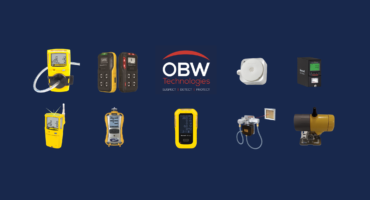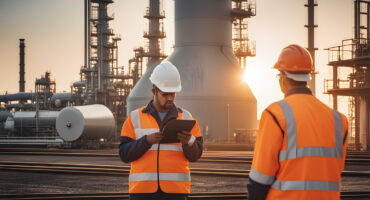Toxic gas exposure can result in significant injuries and even death, which is why gas monitors are essential in potentially hazardous workplaces. Overexposure to each gas, however, causes various symptoms.
Many gases, such as ammonia (NH3), chlorine (Cl2), and sulfur dioxide (SO2), induce acute burning in the eyes, nose, throat, and windpipe within seconds of exposure, but less soluble gases can take hours to manifest. Some gases, such as methane and carbon dioxide (CO2), can deplete the body’s oxygen supply, causing problems such as breathing difficulty and even death.
The deployment of a suitable gas monitor will guarantee that any workers working in a potentially hazardous area can leave before any signs of gas exposure arise.
Gas detectors assess the concentration of certain gases in the atmosphere and provide measurements that save lives. It is required to frequently monitor the levels of a specific gas in a room to ensure the safety of those who are present, whether in a household, workplace, or industrial setting.
Gas detectors come in two main categories: portable and fixed. A worker in an industrial setting frequently wears or carries a portable gas detector. These are typically battery-operated and used to detect poisonous or flammable gases in tight spaces. Fixed gas detectors are commonly employed in large-scale operations where particular gases must be monitored continuously. They are permanently installed at a potentially hazardous position, with sensor heads in various places providing readings that are fed back to a control panel, which is normally in a safe location.
A gas detector’s primary function is to monitor the atmosphere for levels of particular gases in order to avoid injuries or deaths. When operating in a confined space, a gas monitor is one of the most important tools. Because ventilation is often limited and exits can be difficult to access quickly in the event of an emergency, portable gas detectors are commonly employed to safeguard a worker’s safety. A worker can ensure that their immediate surroundings are free of specified gases and that they have enough time to leave the area if any harmful gases are present by using a small and portable gas detector
Gas detectors are also widely employed in both residential and commercial facilities to protect against common gases like CO2. Carbon monoxide poisoning can be dangerous to both humans and animals, which is why CO2 detectors are required in both residential and commercial properties.
Gas detectors are classified according to the sort of gas they detect: combustible or poisonous. Catalytic and infrared sensors are commonly used to detect combustible gases, while electrochemical and metal oxide semiconductor technology is used to detect poisonous gases.
Due to their efficiency and low manufacturing costs, catalytic sensors are the most widely employed for gas detection. They use a platinum-coated wire coil that releases heat when it comes into contact with a flammable gas. The sensors will sound an alarm when a particular temperature is achieved. Infrared sensors emit and detect IR light using a series of transmitters and receivers. If there is a gas in the optical path, the light will be obstructed, and an alert will ring.
Electrochemical sensors are highly sensitive devices that use electrodes to continuously detect the parts per million of gas in the air. Electric signals deliver a warning message to a digital display when a harmful level is reached. Metal Oxide Semiconductors use a tin or tungsten oxide-based gas-sensitive screen that reacts when a harmful gas is present, activating an alarm.
The bump test is used to ensure that a gas monitor is operating at its best by exposing it to a known concentration of the target gas for a short period of time. A bump test should be done prior to each use and if a unit was exposed to any chemicals or dirt etc.
The reading is compared to the real amount of gas present, as specified on the test gas cylinder, and if the detector alarms within an acceptable range of the actual concentration, usually within 10%, it is safe to use.
The gas detector must not be used until a full calibration has been performed if the bump test results are not within the permissible range or it takes more than 30-40 seconds to alarm.
A bump test failure can mean a number of things;
From the Blog



If you have any questions about our products or services, please feel free to contact us.

Join our mailing list to receive the latest news and updates from our team.